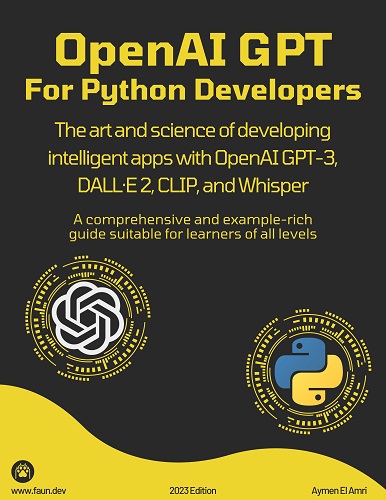LeakGod
Golden Member

- Joined
- May 24, 2024
- Messages
- 264
- Reaction score
- 1,120
- Points
- 43
- Thread Author
- #1

Explore the fascinating world of artificial intelligence and solve real-life problems! In this hands-on tutorial, you'll build smart, real-world applications using GPT-3, DALL-E, Whisper, CLIP, and other tools from the OpenAI and ML ecosystem. Rest assured, you don't need to be a data scientist or machine learning engineer to follow this guide.
The knowledge you gain from this guide will be applicable to GPT-3 and will likely also be relevant to GPT-4 if it is ever released.
OpenAI provides APIs (application programming interfaces) to access its AI. The purpose of the API is to abstract the underlying models by creating a universal interface across all versions, allowing users to use GPT regardless of its version.
The goal is to provide a step-by-step guide to using GPT-3 in your projects using this API, but not only - many other tools and models created by OpenAI such as Whisper (an automatic speech recognition (ASR) system trained on 680 000 hours of multi-lingual and multi-task supervised data), CLIP (Contrastive Language-Image Pre-training), a neural network trained on multiple pairs (image, text) and DALL· E 2, a new artificial intelligence system that can create realistic images and drawings on based on descriptions in natural language.
Whether you are building a chatbot, an AI voice assistant, a semantic search engine, a classification system, a recommendation engine, a web application providing AI generated data, or any other natural language/image processing platform /votes, this guide will help you achieve your goals.
If you know the basics of the Python programming language and are willing to learn a few more techniques, such as using Pandas data frames and some NLP techniques, you have all the tools you need to start building intelligent systems using OpenAI tools.
Rest assured, you don't need to be a data scientist, machine learning engineer, or artificial intelligence expert to understand the concepts, techniques, and tutorials presented in this guide. Our explanations are crystal clear and easy to understand, using simple Python code, examples, and practical exercises.
This tutorial is hands-on learning oriented and is designed to help the reader create real-world applications. The guide is example-based and contains many practical examples to help the reader understand the concepts and apply them to real-life scenarios to solve real-world problems.
To see this hidden content, you must reply and react with one of the following reactions :  Like,
Like,  Love,
Love,  Haha,
Haha,  Wow
Wow


